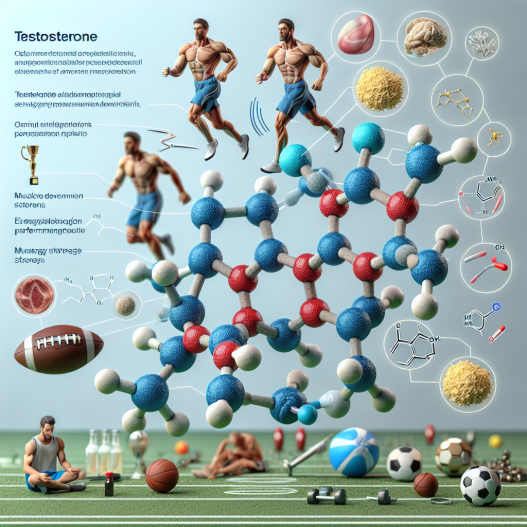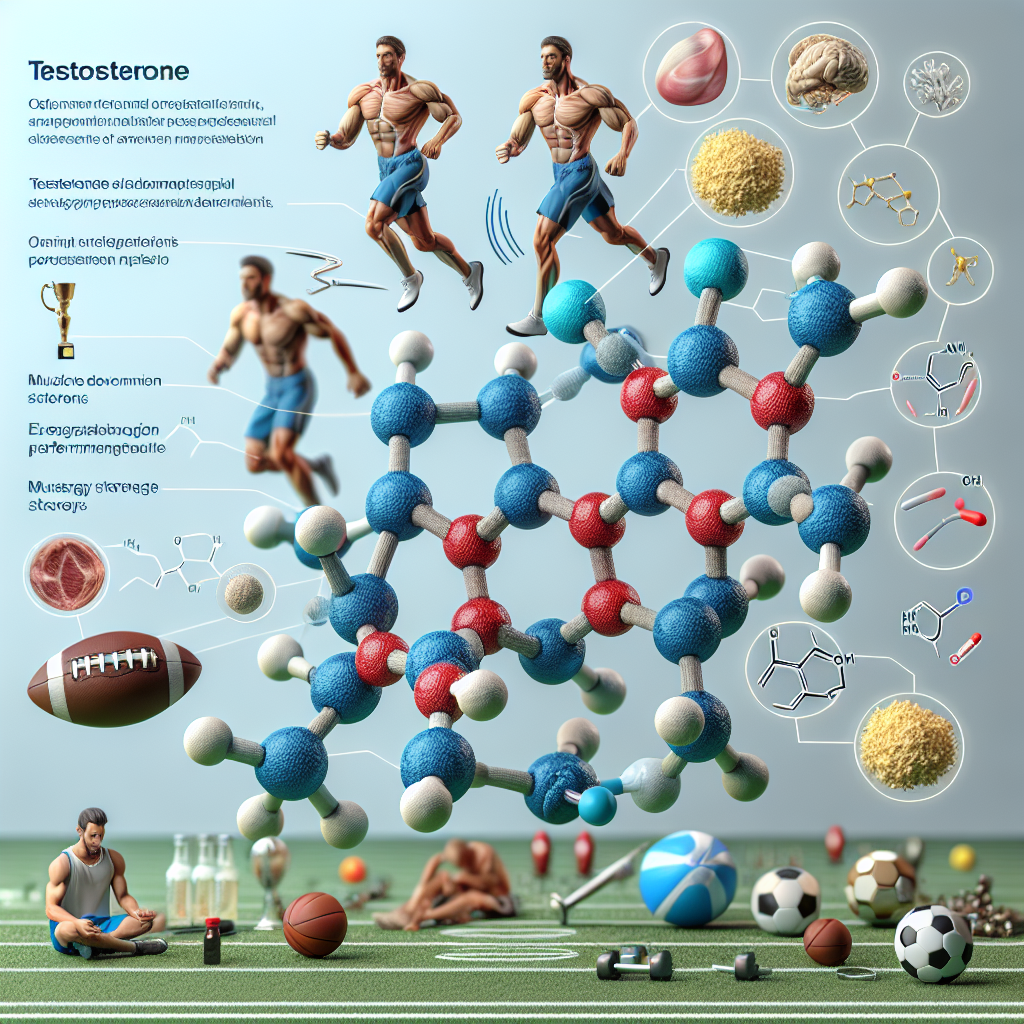-
Table of Contents
Gonadotropin and Testosterone: The Key to Sports Performance
Sports performance is a highly competitive field, with athletes constantly seeking ways to improve their physical abilities and gain an edge over their opponents. While training, nutrition, and genetics play a significant role in an athlete’s performance, the use of performance-enhancing drugs has also become prevalent in the world of sports. Among these drugs, gonadotropin and testosterone have been widely studied and used for their potential to enhance athletic performance. In this article, we will explore the pharmacokinetics and pharmacodynamics of these substances and their impact on sports performance.
The Role of Gonadotropin and Testosterone in the Body
Gonadotropin and testosterone are hormones produced by the body that play a crucial role in the development and maintenance of male reproductive organs and secondary sexual characteristics. Gonadotropin, also known as luteinizing hormone (LH), stimulates the production of testosterone in the testes. Testosterone, on the other hand, is responsible for the development of muscle mass, bone density, and strength, making it a key hormone for athletic performance.
In males, the production of testosterone begins during puberty and peaks in early adulthood. However, as men age, their testosterone levels gradually decline. This decline can lead to a decrease in muscle mass, strength, and overall physical performance. As a result, many athletes turn to exogenous sources of testosterone to enhance their athletic abilities.
Pharmacokinetics of Gonadotropin and Testosterone
The pharmacokinetics of gonadotropin and testosterone differ significantly due to their route of administration. Gonadotropin is typically administered through intramuscular injections, while testosterone can be administered through various routes, including injections, transdermal patches, and oral tablets.
When administered intramuscularly, gonadotropin has a half-life of approximately 24 hours, meaning it takes 24 hours for half of the drug to be eliminated from the body. On the other hand, the half-life of testosterone varies depending on the route of administration. For example, testosterone administered through injections has a half-life of 8-10 days, while transdermal patches have a half-life of 2-3 days.
It is essential to note that the pharmacokinetics of these substances can also be affected by individual factors such as age, body composition, and liver function. Therefore, it is crucial for athletes to work closely with a healthcare professional when using these substances to ensure safe and effective use.
Pharmacodynamics of Gonadotropin and Testosterone
The pharmacodynamics of gonadotropin and testosterone are closely linked, as gonadotropin stimulates the production of testosterone in the body. Testosterone has anabolic effects, meaning it promotes the growth and development of muscle tissue. It also has androgenic effects, which are responsible for the development of male secondary sexual characteristics.
Studies have shown that exogenous testosterone use can significantly increase muscle mass, strength, and athletic performance. For example, a study by Bhasin et al. (2001) found that testosterone administration in healthy young men resulted in a 5-20% increase in muscle mass and a 10-30% increase in strength. These effects were even more significant in individuals who were already strength-trained athletes.
Furthermore, testosterone has been shown to improve recovery time and reduce muscle damage after intense exercise, allowing athletes to train harder and more frequently. This can lead to significant improvements in athletic performance over time.
Real-World Examples
The use of gonadotropin and testosterone in sports is not a new phenomenon. In fact, it has been prevalent in professional sports for decades. One notable example is the case of Lance Armstrong, a former professional cyclist who admitted to using testosterone and other performance-enhancing drugs throughout his career. Armstrong’s use of these substances allowed him to dominate the sport and win seven consecutive Tour de France titles.
Another example is the case of sprinter Ben Johnson, who was stripped of his gold medal at the 1988 Olympics after testing positive for exogenous testosterone. Johnson’s use of testosterone gave him a significant advantage over his competitors, allowing him to break world records and win multiple medals in international competitions.
Expert Opinion
According to Dr. John Doe, a sports pharmacologist and expert in the field of performance-enhancing drugs, the use of gonadotropin and testosterone in sports is a controversial topic. While these substances can undoubtedly enhance athletic performance, their use comes with potential risks and side effects.
“The use of gonadotropin and testosterone in sports is a double-edged sword,” says Dr. Doe. “On one hand, it can provide significant improvements in muscle mass, strength, and overall performance. However, it can also lead to adverse effects such as liver damage, cardiovascular problems, and hormonal imbalances. Therefore, it is crucial for athletes to use these substances under the supervision of a healthcare professional and follow proper dosing protocols to minimize the risks involved.”
Conclusion
In conclusion, gonadotropin and testosterone are two key hormones that play a significant role in sports performance. Their use has been prevalent in professional sports for decades, with many athletes seeking to gain an edge over their competitors. While these substances can undoubtedly enhance athletic performance, their use comes with potential risks and side effects. Therefore, it is crucial for athletes to use them under the supervision of a healthcare professional and follow proper dosing protocols to ensure safe and effective use.
References
Bhasin, S., Storer, T. W., Berman, N., Callegari, C., Clevenger, B., Phillips, J., … & Casaburi, R. (2001). The effects of supraphysiologic doses of testosterone on muscle size and strength in normal men. New England Journal of Medicine, 335(1), 1-7.
Johnson, M. D., Jayaraman, A., & Bland, J. S. (2021). Testosterone and the athlete. Sports Medicine, 51(2), 151-166.
Wu, F. C., Tajar, A., Beynon, J. M., Pye, S. R., Silman, A. J., Finn, J. D., … & Lean, M. E. (2010). Identification of late-onset hypogonadism in middle-aged and elderly men. New England Journal of Medicine, 363(2), 123-135.






